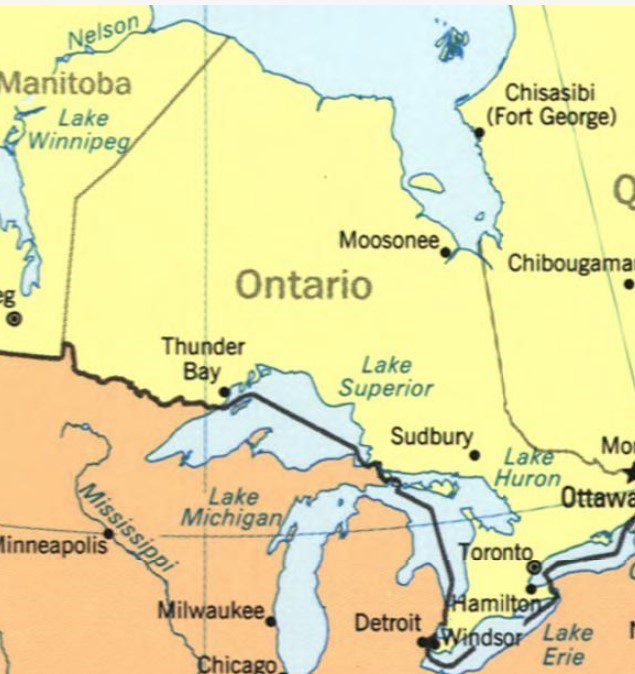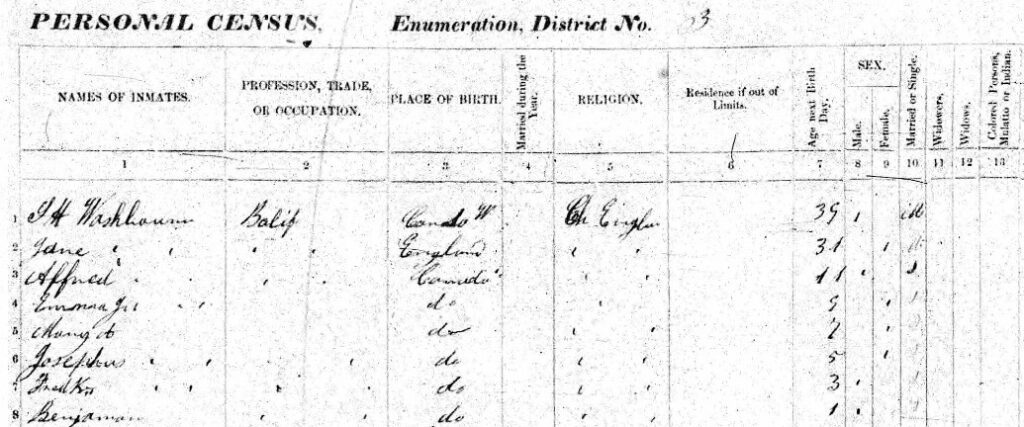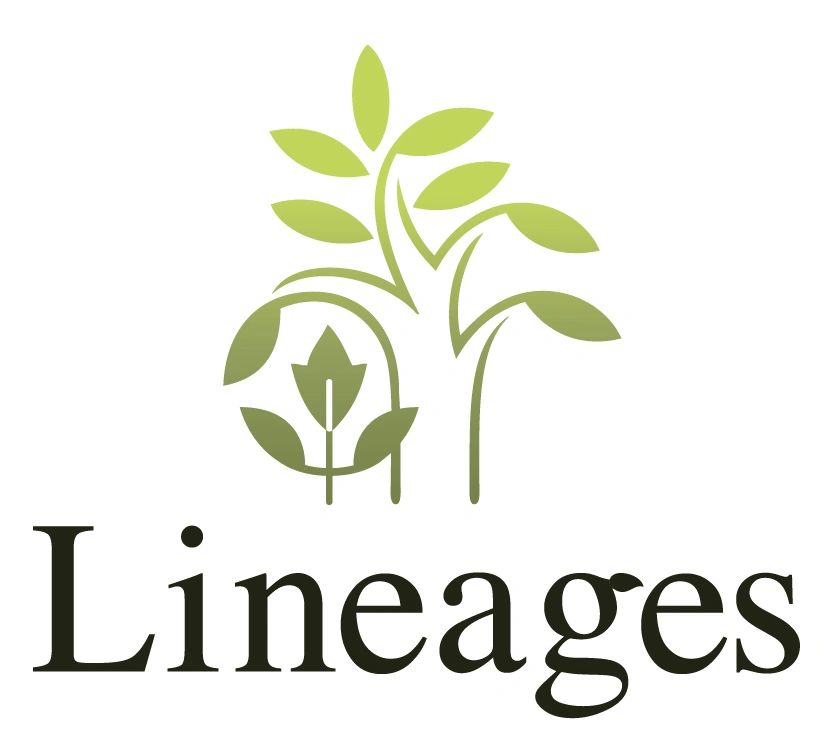Researching Ontario Ancestors : Part 1

This is part one of a two-part series about researching ancestors in Ontario, Canada. Part one will focus on an overview of the most popular record types. Part II will be an overview of advanced resources.
Do you have ancestors who lived in Ontario, Canada? Researching in Ontario can be a bit different than researching in the United States. Many genealogical records are held at a larger level of government for collection and preservation. Many United States researchers are used to relying on the county courthouse for genealogical records. This is untrue for Ontario genealogical research. Knowing where to locate genealogical documents in Ontario will be the key to making discoveries.
Ontario History
Canada’s history of human settlement dates back thousands of years, with Indigenous peoples inhabiting the land long before European exploration and settlement. The first Europeans made their presence in the early 1600s, with the French starting to settle upon the land. Soon after, the British started settlements. Ontario was initially part of the colony of New France, and in 1763, by the Treaty of Paris, it became part of the British colony.
Ontario became Upper Canada in 1791, and then the Province of Canada in 1841, when Upper and Lower Canada became Canada West and East, respectively. The name “Ontario” was adopted when the Canadian Confederation was formed in 1867 and Canada West became Ontario.
Ontario experienced several waves of immigration, including Loyalists fleeing the American Revolution (1775-1783), Irish immigrants escaping the Great Famine (1845-1852), and various European and non-European groups seeking new opportunities throughout the 19th and 20th centuries. All of this contributed to Ontario’s vast cultural and demographic population.
Place Names
When beginning your Ontario, Canada research, it is important to keep in mind that often the same place name is used more than once throughout Ontario. Failing to recognize this may lead you astray when you discover your ancestor’s place of origin. The Ontario Locator on the CanadaGenWeb website is an invaluable resource when trying to determine where a place in Ontario is located. For example, if you find a record that lists that your ancestor was born in Simcoe, Ontario, you can use the Ontario Locator to get ideas about where that place is. But be careful – in this case, Simcoe can refer to Simcoe County, Simcoe township in Simcoe County, Simcoe Island in Frontenac County, Simcoe in Norfolk County, and a few other places.
Records
Vital Records (Births, Marriages, and Deaths)
In 1869, the Vital Statistics Act required that civil registration of births, marriages, and deaths in Ontario be recorded. Records of vital events pre-1869 may still be found, but finding them is less consistent. Likewise, you may not find a record of a vital event post-1869, especially in the years immediately following the Act.
Vital records that occurred before 1950 are easily accessible online. Ancestry has three main databases that cover vital records for Ontario totaling over 21 million records: Births (1832-1917), Marriages (1826-1940), and Deaths (1869-1950). Keep in mind that the year span is only a general guide and will depend on the location of your ancestor’s vital event, if the records are kept, and if they are included in the database. Before searching each database, be sure to read the database description to see what exactly is included. To access vital records that are more recent, contact the Office of the Registrar General. Keep in mind that due to privacy laws, there are limits on who can access vital records. See their FAQ page for the most current information.
Census
The first province-wide census enumerations started in 1842. Prior to 1842, annual censuses were taken by each township; however, few returns survive. The 1842 census provides limited information. Only the head of household was enumerated, with numerical information about the other household members (like pre-1850 United States censuses), and not every location had a census that recorded names. For example, Simcoe County censuses only recorded numerical information about the inhabitants. The kind of information you will find in the 1842 census will depend on the location. This census can be found on FamilySearch.
Later censuses (1851-1931) recorded more complete information about households. The 1851 census was the first to record every person in the household., as well as their age, birthplace, occupation, and religious denomination. It also enumerated information about their residence. The census was recorded every 10 years, and each subsequent census recorded different information. Canada has a 92-year privacy law on census record access (compared to the 72-year law in the United States), which means that the latest census available for research is the 1931 census. Both FamilySearch and Ancestry have census records available on their sites.

Land and Property Records
Records of land ownership often predate vital records and can be an invaluable resource for Canadian genealogy research. Land grants are an important resource to check for early Ontario settlers. The Constitutional Act of 1791 switched the original seigneurial system of land ownership to a freehold system of land ownership. People could be granted land following a process that began with making a petition. The petition often includes information such as when the person settled in the area, information about their family, and notes if they were ever granted land before. A warrant was then issued to allow the surveyor to survey the parcel of land. Once the settler met certain conditions (which included a fee and that they were to improve the land for a certain period of time), they would be issued a Crown patent which would give the settler title to the land. The Land Petitions of Upper Canada can be found on the Library and Archives Canada’s website. While the database is searchable by name, to access the records you will have to browse the digitized microfilms.
Deeds recorded the transfer or sale of property from one entity to another. These can be found in the FamilySearch catalog and are not indexed. Once you locate where your ancestor lived, navigate to the FamilySearch catalog for that county. Each county will have General Registers (which recorded the deeds by grantor and grantee), and the Abstract Index Books (which recorded all land transactions, organized by township and then by lot and concession number. To use the Abstract Indexes, you must know what parcel of land your ancestor owned. All these records are not indexed and will require manual browsing.

Conclusion
Ontario has a rich history and a vast collection of records available to grow your family tree. Understanding the basic types of records available and how to access them will help you to locate your ancestor.
Stay turned for part II, where we will dive deeper into less utilized record types and more specific techniques for researching in Ontario.
By Tyler
Resources
Ontario Locator, CanadaGenWeb, https://canadagenweb.org/specialprojects/ontario-locator/
Ontario Databases on Ancestry, https://www.ancestry.com/search/collections/catalog/?title=Ontario&sort=record-count
Office of the Registrar General, FAQ, https://www.orgforms.gov.on.ca/eForms/eForms_faq/start.do?lang=en
1842 Census of Upper Canada, FamilySearch, https://www.familysearch.org/search/collection/1834342
Land Petitions of Upper Canada, 1763-1865, Library and Archives Canada, https://www.bac-lac.gc.ca/eng/discover/land/land-petitions-upper-canada-1763-1865/Pages/land-petitions-upper-canada.aspx
Ontario Online Genealogy Records, FamilySearch Wiki, https://www.familysearch.org/en/wiki/Ontario_Online_Genealogy_Records
Images
Image 1: United States Central Intelligence Agency. Canada. [Washington, D.C.: Central Intelligence Agency, 1994] Map. https://www.loc.gov/item/2005631227/.
Image 2: Snippet of the 1861 Census of Canada. Note some of the information being recorded. 1861 Census of Canada, Tecumseth township, Simcoe County, Ontario, household of F H Washbourn; images, Ancestry.
Image 3: Snippet of the abstract index book for Adjala township, lot 1, concession 1. It shows the history of the land transactions for this parcel of land. Simcoe County (Ontario). Registrar of Deeds. Adjala township (v. 1), abstract index for lot 1 concession 1; images, FamilySearch; FSL film no. 178742.
